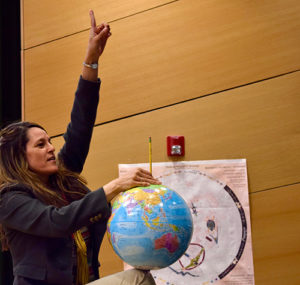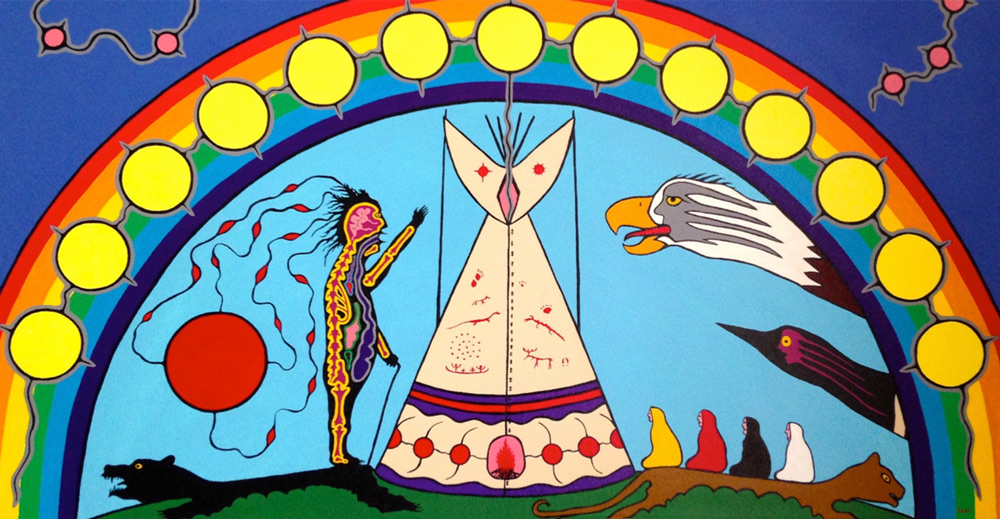
Minnesota Skies: September 2020
Your local guide to observing celestial objects and events
Published08/28/2020
Indigenous Contributors
Carl Gawboy is a professor emeritus, elder, and artist from the Bois Fort Reservation. Carl’s work on Ojibwe astronomy spans four decades.
Dakhóta iápi Okhódakičhiye (Dakota Language Society) for Dakota language help.
Iyekiyapiwiƞ Darlene St. Clair is an associate professor, Mni Sota MakỌce project lead, and an enrolled member of the Lower Sioux Indian Community.
Jeffrey Tibbetts is the Title III director at Fond du Lac Tribal & Community College, an artist, and is Ojibwe from the Fond du Lac Reservation.
Ramona Kitto Stately is an enrolled member of Santee Sioux nation and project director of WASH-MN (We are still here, Minnesota!)
Travis Novitsky is a professional nature photographer from the Grand Portage Anishinaabe Nation in Northeast Minnesota.
William Wilson is an artist, elder, and first language Ojibwe speaker from Gull Bay First Nation.
Moon Phases
September 2—Full Moon
The Moon is located on the opposite side of the Earth as the Sun and the side we see is fully illuminated.
September 10—Third Quarter Moon
This phase occurs when the Moon is three-quarters of the way through its orbit around the Earth.
September 17—New Moon
The Moon is located on the same side of the Earth as the Sun and is not visible in the night sky. This is the best time of the month to observe faint objects like galaxies and star clusters because there is no moonlight to interfere.
September 23—First Quarter Moon
The Moon is one quarter of its way through its orbit around the Earth, which makes half the Moon illuminated and half dark from our perspective. This is the best time of the month to see the Moon’s surface features like craters and mountains through binoculars or a telescope.
Learn with Annette S. Lee, PhD, during a recent Facebook Live event entitled, “A Loon, a Crane, a Fisher, & a Salamander in the MN Night Sky.” Many thanks to our generous co-hosts, Native Skywatchers and Annette S. Lee, PhD.
Sky-lights
August—throughout the month
Look to the south at around 10 pm to see Jupiter and Saturn close to each other. Both will be present in the evening sky throughout the month, moving further to the southwest as the month goes along.
Mars—at the same time you’re finding Jupiter and Saturn, look to the east to catch the fiery red planet rising. Mars will be visible throughout the month, look for it from 10 pm until sunrise.
Venus—looking at the sky at 4:30 am in the beginning of September, the brightest planet we can see will shine brightly to the east. Throughout the month you can see Venus at the same time in the morning, but closer and closer to the horizon. Use a small telescope to catch a glimpse of Venus’ phases as it orbits around the Sun and different amounts of the planet reflect light back to us.
Mercury remains hidden by the glare of the setting Sun throughout September. Sorry to those hoping to catch a glimpse of the smallest planet. 🙁
September 5
The Moon and Mars make a close approach, coming within one finger width of each other. Start watching at around 11 pm until the Moon moves “underneath” Mars and to the other side of the red planet by 1 am on September 6.
September 7
Algol, the Demon Star, in the constellation of Perseus,will be at minimum brightness for roughly two hours starting around midnight. Look for it to the northeast, four fist lengths up from the horizon.
September 11
Neptune at opposition. The last planet in the solar system will be at its closest to the Earth, only 2.7 billion miles (4.3 billion km) away. A telescope at least six inches across will show you a tiny blue dot in the sky, the color coming from methane in this giant planet’s atmosphere. You’ll have a lot of time to watch Neptune since it will be visible all night long. Don’t despair if you miss this night’s viewing, Neptune will remain in the night sky for several more months.
September 22
Happy Autumnal (Fall) Equinox! Autumn begins in the Northern Hemisphere at 8:31 am. On this day, the Sun will shine directly on the equator and there will be nearly equal amounts of day and night throughout the world. As we move into the fall and winter, the Sun will start setting sooner and sooner and the amount of daylight will decrease, leaving more and more time for stargazing! Just remember to dig out those warmer coats.





